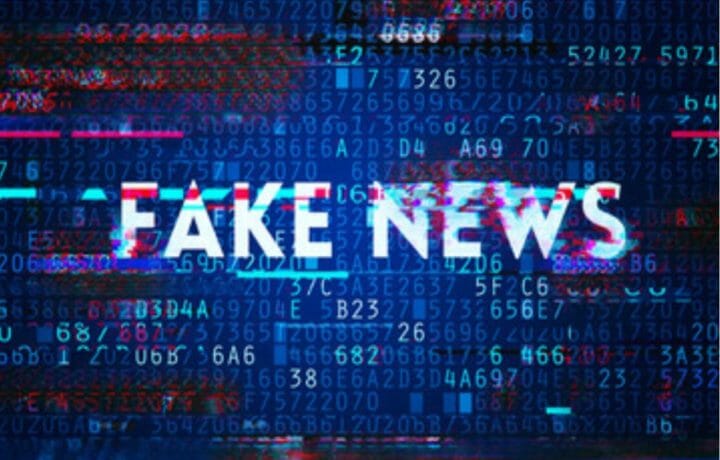In an era where information is as accessible as it is manipulatable, the concept of a ‘post-truth’ reality has emerged as a formidable challenge to global societies and, significantly, to national security. By examining the implications of a society grappling with distinguishing fact from fiction, you can see how blurred reality poses a unique set of challenges for national security.
Defining the Post-Truth Reality
The term ‘post-truth’ has gained prominence in recent years, characterized by an environment where objective facts are less influential in shaping public opinion than appeals to emotion and personal belief. In this digital age, misinformation and ‘alternative facts’ propagate rapidly through social media and other online platforms, creating a landscape where truth is often overshadowed by narrative and rhetoric. This phenomenon is not just a cultural or social issue; it becomes critically pertinent to national security when misinformation shapes public perception of key issues and policies.
Implications for National Security
In an environment where facts are malleable and public opinion is easily swayed, the risks are manifold. Misinformation can distort public understanding of critical security issues, leading to misplaced fears or complacency. For instance, exaggerated threats or understated vulnerabilities can result in inappropriate allocation of resources and attention.
Moreover, misinformation can be weaponized by foreign adversaries, exploiting the divisions within society. The spread of false narratives about national security matters can undermine trust in institutions and weaken the cohesive response required to counteract threats. The 2016 U.S.election interference, where Russian entities used misinformation to sow discord, serves as a stark example of how misinformation can be used as a tool in geopolitical strategy, thereby impacting national security directly.
The Intelligence Community’s Struggle
In a post-truth world, the intelligence community faces heightened challenges. The task of gathering, analyzing, and disseminating accurate intelligence is complicated when falsehoods are rampant. Intelligence agencies must now contend not only with the traditional cloak-and-dagger espionage but also with the pervasive spread of misinformation that can obscure and distort the truth.
One significant challenge is the “signal-to-noise” problem. With an overwhelming amount of information, much of which is unverified or false, intelligence analysts find it increasingly difficult to extract actionable insights. Additionally, the public’s skepticism towards official sources of information, fueled by accusations of ‘fake news,’ hampers the ability of intelligence agencies to effectively communicate threats to the public and policymakers.
Historical Versus Contemporary Scenarios
Examining historical versus contemporary scenarios reveals how the challenge of misinformation has evolved. During the Cold War, propaganda was a known tool used by both sides, but the dissemination channels were limited and more easily identifiable. Today, the digital landscape allows for a rapid and widespread diffusion of misinformation, making it more challenging to control or counteract.
In the past, responses to misinformation were primarily reactive and focused on counter-propaganda or public information campaigns. In contrast, contemporary strategies require a proactive approach, leveraging technology to identify and mitigate misinformation before it takes root. The evolution in response strategies underscores the need for adaptability and innovation in the face of ever-changing tactics used by those who propagate misinformation.
Strategies to Combat Misinformation
Addressing the threat of misinformation in a post-truth world requires a multifaceted approach. Effective strategies involve not only the intelligence community and policy makers, but also tech companies, educators, and the general public.
1. Strengthening Intelligence Capabilities
Intelligence agencies must enhance their capabilities to identify and counteract misinformation campaigns, especially those orchestrated by foreign adversaries. This involves investing in advanced analytics and machine learning technologies to sift through vast amounts of data and discern misleading narratives.
2. Collaboration with Tech Companies
Tech companies play a crucial role in controlling the spread of misinformation. Collaborative efforts between these companies and government agencies can help in the early detection and suppression of false narratives. Implementing more robust fact-checking measures and algorithmic adjustments can reduce the visibility and impact of misinformation on social media platforms.
3. Public Education and Awareness
Educating the public about the dangers of misinformation and equipping them with skills to identify false narratives are vital. Initiatives to improve digital literacy can empower individuals to critically evaluate the information they encounter online.
4. Policy and Regulation
Government policy can also play a role. Regulations that promote transparency in online political advertising and hold platforms accountable for the spread of misinformation can help mitigate its impact.
5. International Cooperation
Misinformation is a global challenge. International cooperation in developing norms and regulations for information sharing and countering misinformation campaigns is essential. Such collaboration can enhance the collective capacity to address the threat at a global level.



